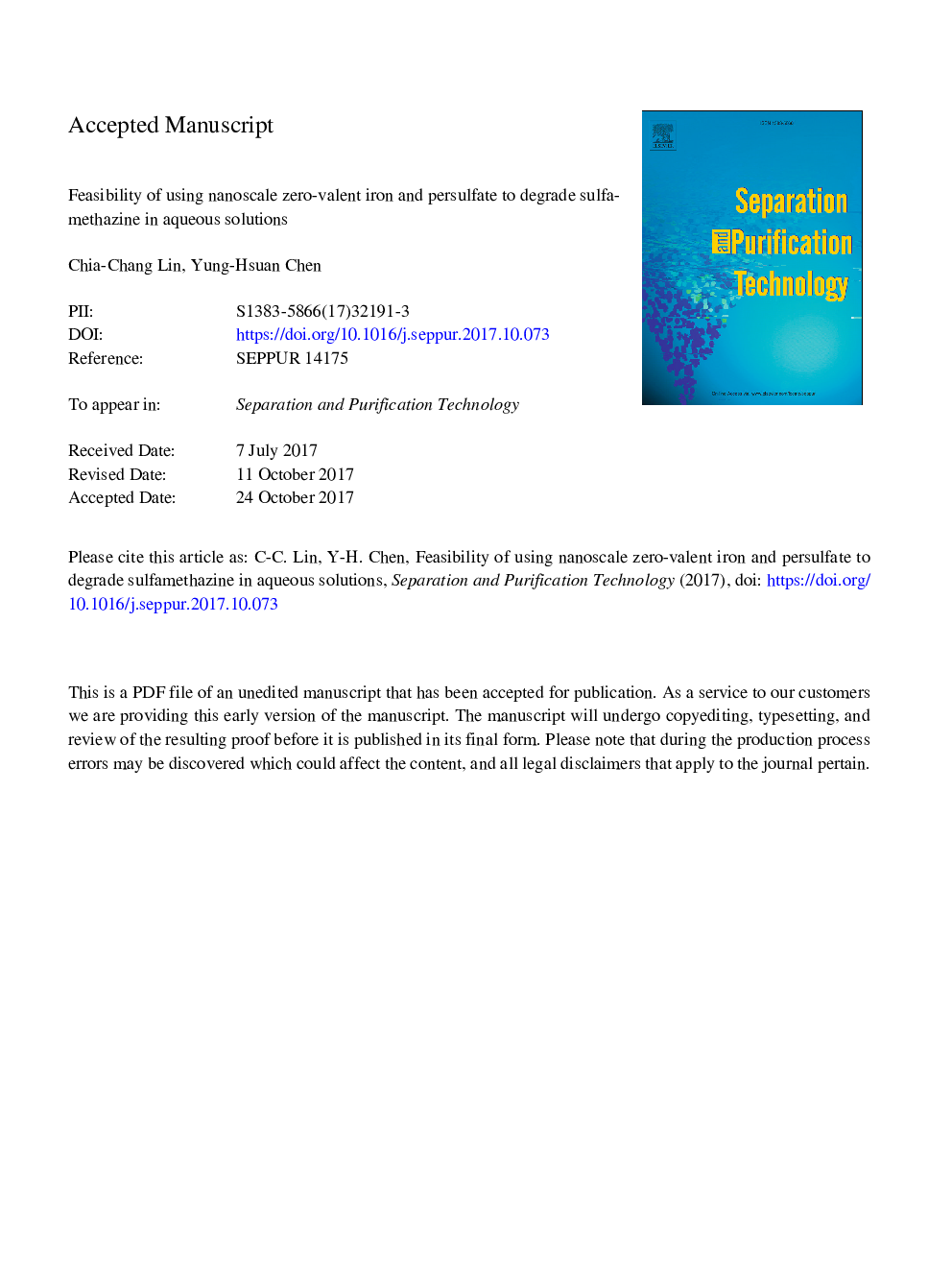| Article ID | Journal | Published Year | Pages | File Type |
|---|---|---|---|---|
| 7044093 | Separation and Purification Technology | 2018 | 37 Pages |
Abstract
This study investigates the effectiveness of the nanoscale zero-valent iron and persulfate (nZVI/PS) process in degrading sulfamethazine (SMT) in aqueous solutions. nZVI was formed using a rotating packed bed with blade packings. The dominant generated free radical in the nZVI/PS process for degrading SMT was SO4â. nZVI can gradually release Fe2+, which subsequently activates PS to form SO4â, increasing the efficiency of degradation of SMT by this process. The effects of the PS/nZVI molar ratio, initial SMT concentration, and species of inorganic anions on the efficiency of degradation of SMT were also studied. A PS/nZVI molar ratio of 1/0.5 in the nZVI/PS process was chosen to reduce the required nZVI dosage at PS concentrations of 0.5, 1, and 2â¯mmol/L. The efficiency of degradation of SMT declined as the initial SMT concentration was increased. Inorganic anions (SO42â, HCO3â, NO3â, and Clâ ions) at high concentrations inhibited the degradation of SMT and their suppressive effects followed the order SO42â > HCO3â > NO3â > Clâ. The efficiency of degradation of SMT using the formed nZVI significantly exceeded that using commercial nZVI that was purchased from Centron Biochemistry Technology. At an nZVI dosage of 56â¯mg/L, a PS concentration of 2â¯mmol/L, and an initial SMT concentration of 10â¯mg/L, the efficiency of degradation of SMT was 93% after 5â¯min in the absence of inorganic anions. Therefore, the nZVI/PS process is highly effective in degrading SMT in aqueous solutions.
Related Topics
Physical Sciences and Engineering
Chemical Engineering
Filtration and Separation
Authors
Chia-Chang Lin, Yung-Hsuan Chen,
